Racing a 40-year-old bike
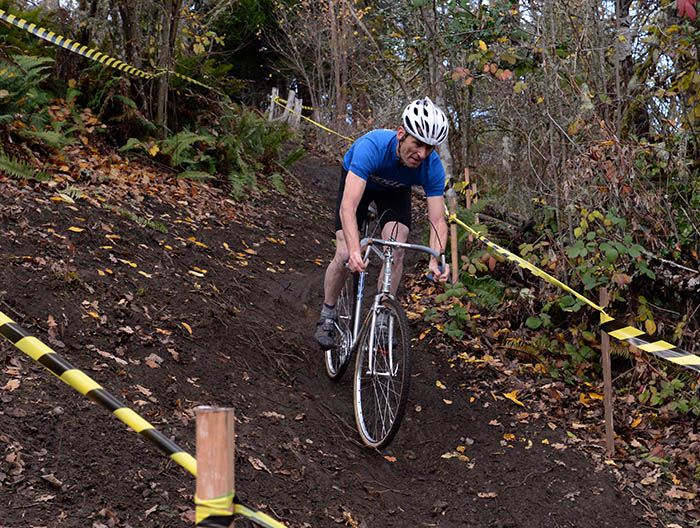
I’ve been racing my Alan cyclocross bike since I bought it second-hand, many years ago, when I was still in college. Back then, it was simply a used ‘cross bike. Now it may seem like a relic from another era.
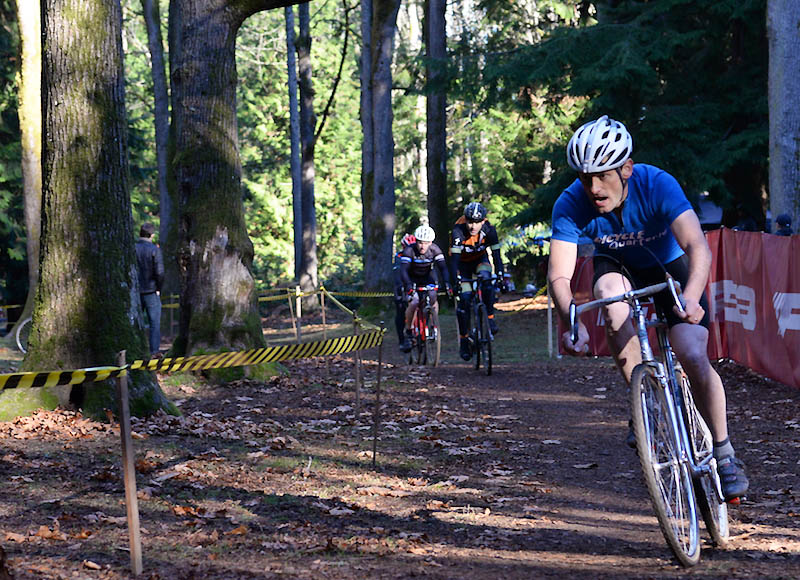
And yet the Alan continues to hold its own in the Pacific Northwest’s cross races. I like the way it accelerates out of corners. Alan’s aren’t as flexible as legend has it – Bicycle Quarterly’s frame flex test found it to be about as stiff as a Columbus SL frame – but mine planes very well for me.
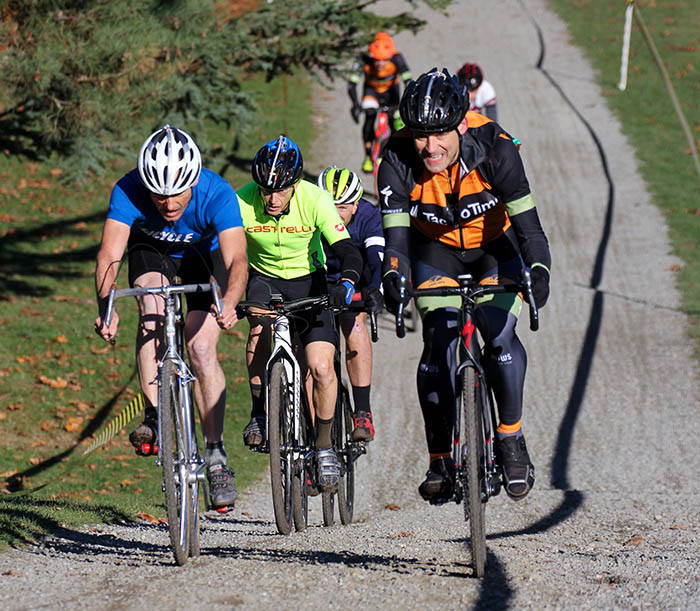
You’d think that modern carbon bikes perform better on the uphills, but that hasn’t been my experience.
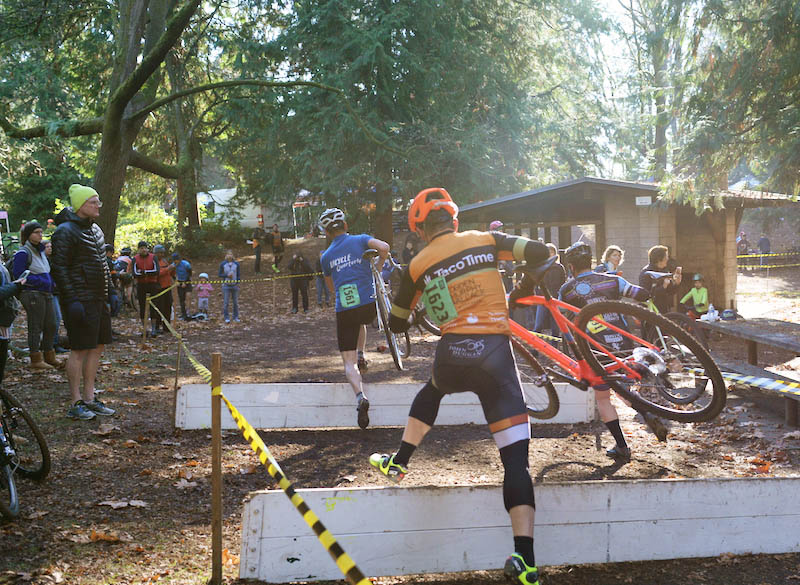
Even the Alan’s weight – 10.0 kg (22 lb) – isn’t uncompetitive. Cyclocross is the one place where the weight of your bike actually matters, as you lift it up several times per lap.
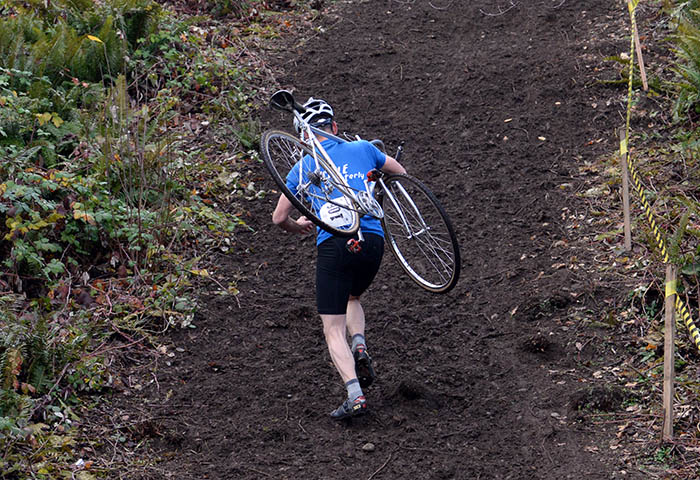
The Alan has one other advantage over modern bikes: Its horizontal top tube makes it easier to portage. A sloping top tube makes the main triangle so small that many racers now push their bikes. Dragging your wheels through the mud and leaning over to reach the handlebars is not the most efficient way to move when it’s too steep to ride.
[youtube https://youtu.be/2_hpsDAovU8?rel=0&w=640&h=360]
How about the lack of disc brakes? You’d expect discs to offer a huge advantage in ‘cross, but the reality is that you can only brake so hard when your tires have limited grip, and good cantilevers are more than sufficient.
I find that rim brakes offer more feel when the lockup point is approaching. I suspect this is because the brake lever is directly connected to the rim, whereas with discs, the feedback from the tires has to be transmitted through the spokes. Does it matter? On the Alan, I often get to the point where one wheel locks up for a split second. Feeling that point approaching, I can start to release the brake slightly before the wheel skids, rather than react to the skidding itself.
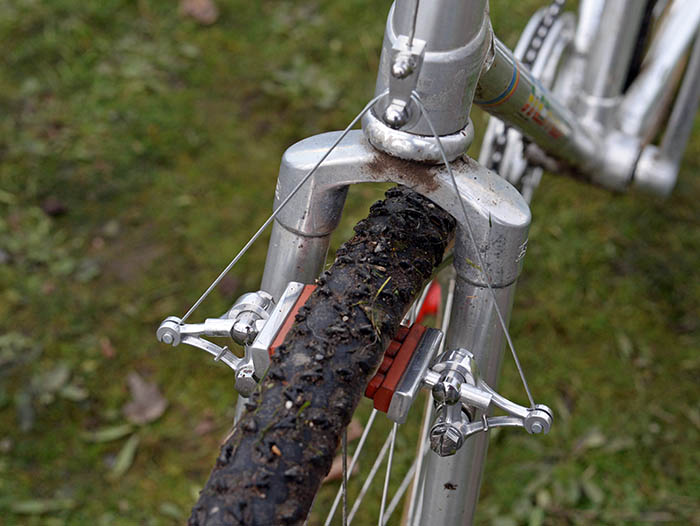
Last year, I installed our Rene Herse brakes on several bikes as part of our pre-release testing. I didn’t expect a huge improvement over the Mafacs installed before, but I was surprised. Not only are the forged arms stiffer and more powerful, but the terrible fork judder the bike displayed before at low speeds has disappeared.
I also like that the roller on the cable hanger self-centers the brake arms if they get bumped during a clumsy dismount or – heaven forbid! – a fall. By the way, falls in ‘cross are rare, but they also don’t usually hurt. Mud is soft!
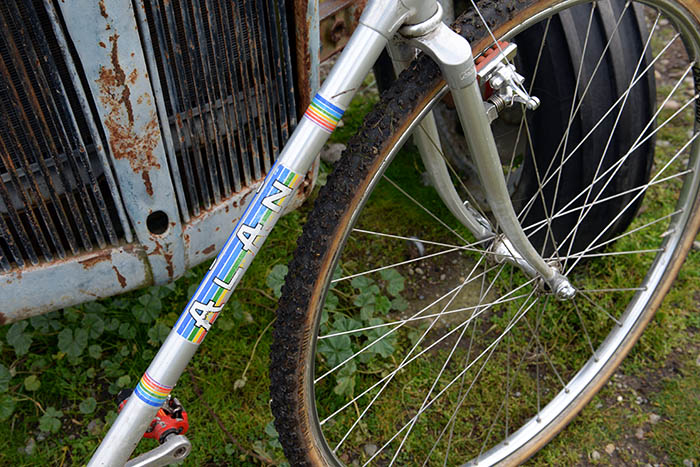
I like that the Alan is a true ‘cross bike – designed for cyclocross racing and nothing else. There are no bottle cage mounts. The top tube is flattened so it doesn’t dig into my shoulder when I portage the bike. The low-trail geometry makes the bike beautifully adjustable at high speeds on slippery surfaces.
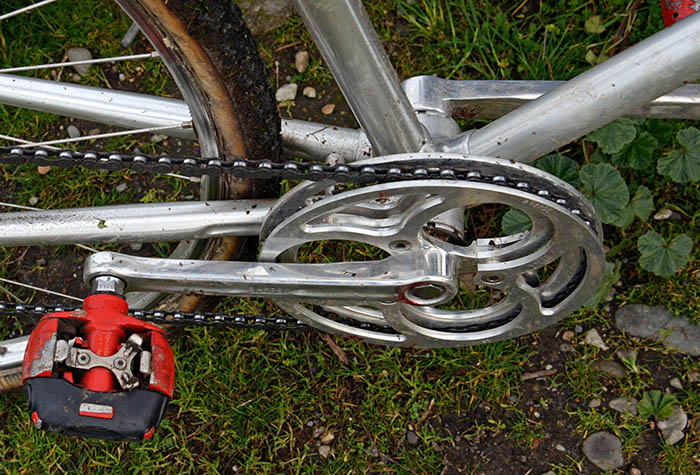
There is no way to mount a front derailleur on the bike. Back when I bought it, that was considered a drawback, as riders were switching to STI. These days, ‘One-By’ gearing is becoming popular again. The old style, with two large chainguards, keeps the chain on even in the rough-and-tumble of ‘cross racing. And if it ever does come off, you don’t have to worry about lining up thick and thin teeth with their corresponding chain links – just drop the chain into the slot and go.
The Alan originally came to me with toeclips, but I’m not interested in retro for retro’s sake. I don’t like fishing for toeclips, so I installed clipless pedals from the get-go. I still like my old Look Moabs. Their platforms are huge, allowing me to pedal even when my foot doesn’t clip in easily because my cleats are clogged with mud.
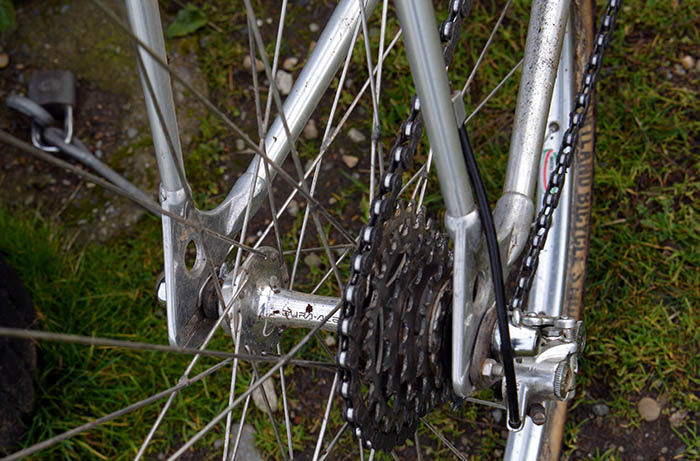
The six-speed freewheel has plenty of gears for me – I rarely use the smallest and largest cogs. And with more space between the cogs, they don’t clog up with mud as easily. The popularity of singlespeeds in ‘cross racing shows that I am not the only one who feels that way.
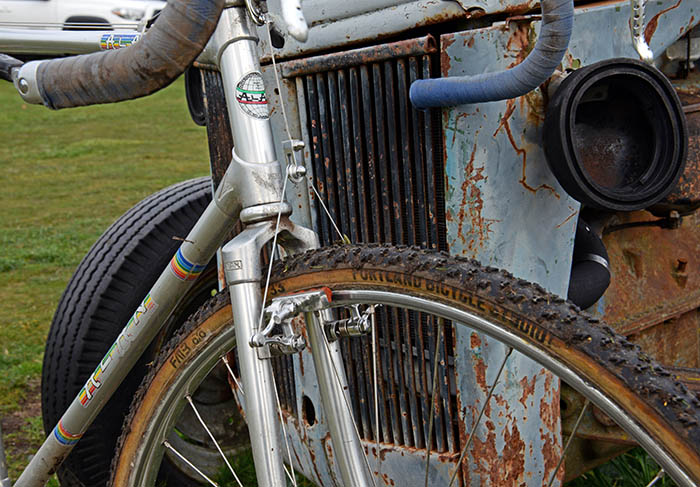
The one place where cyclocross bikes have changed a lot are the tires. Back when I started racing, hand-made ‘cross tires existed, but they were almost unknown. Now I race on hand-made FMB Super Mud tubulars that roll amazingly well across bumpy terrain. The width of the tires has changed as well. Back when the Alan was built, 28 mm was considered wide. On dry days, many racers were on 24 mm tires that looked like road tires. I now run 33s, but they are a tight fit. Anything wider won’t have enough mud clearance.
I’d love to use our Steilacoom 700C x 38 mm clinchers. They provide the same ride quality as my tubulars with less hassle – the extra 10% in width makes up for the tire being surrounded by the rim, rather than sitting on top of it. And with the Steilacooms performing as well on pavement as in the mud, to be able to ride to the races – even when they are as far away as Steilacoom. The FMBs are great on mud, but the small knobs squirm terribly on pavement.
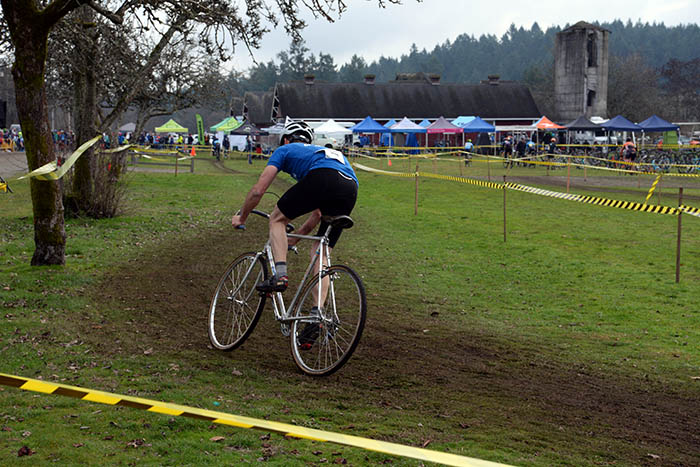
It’s been fun racing the Alan. If I ever replace it, it’ll be a with similar bike. A new ‘cross bike would probably be made from steel rather than aluminum, but with similar flex characteristics and similar components. I’ve ridden modern gravel and ‘cross bikes, and they are very nice, too. But for me, the Alan just works remarkably well.
Photo credits: Westside Bicycle (Photo 3), Natsuko Hirose (all other photos).


